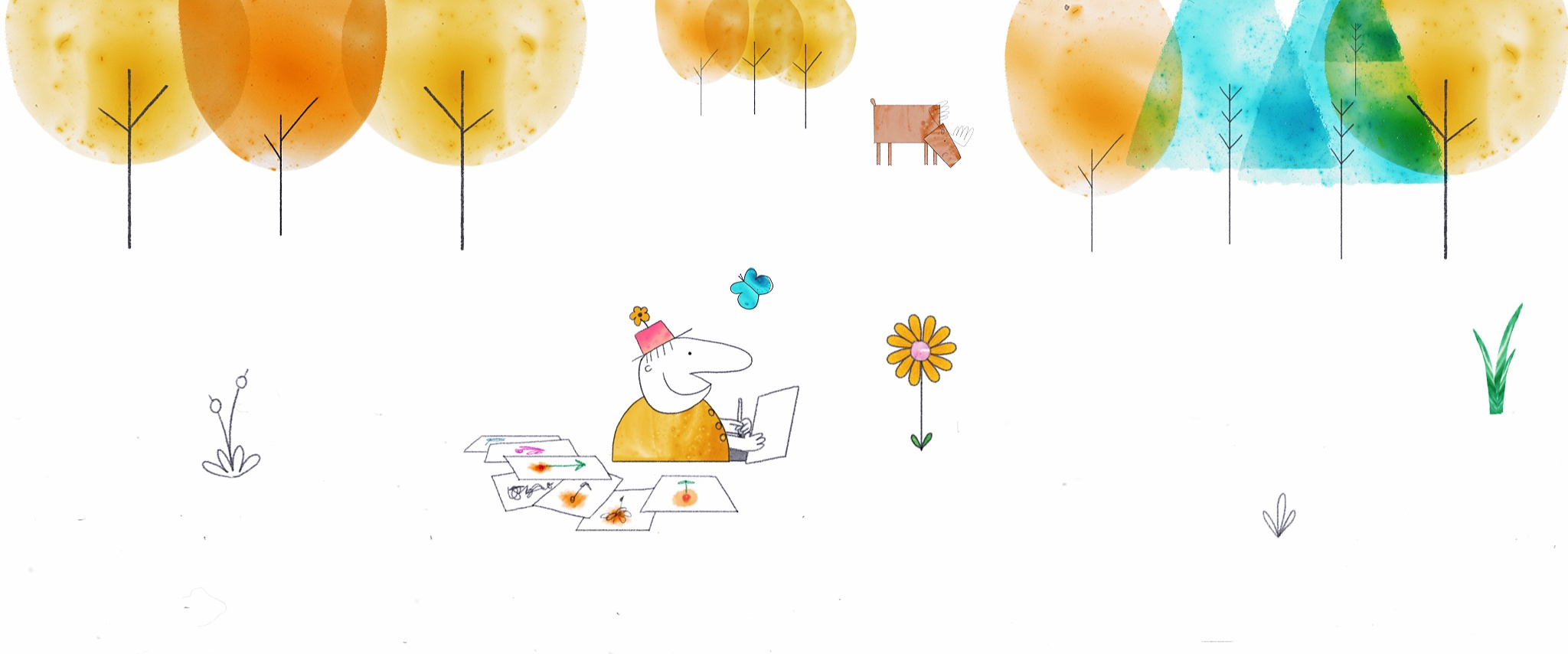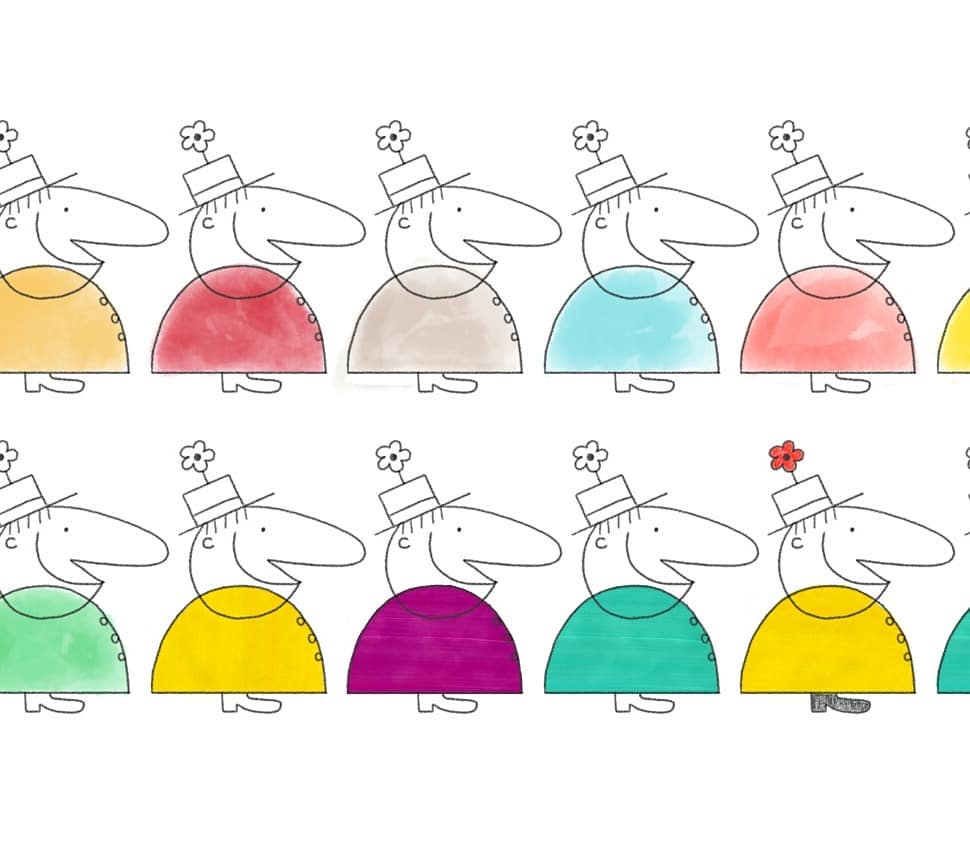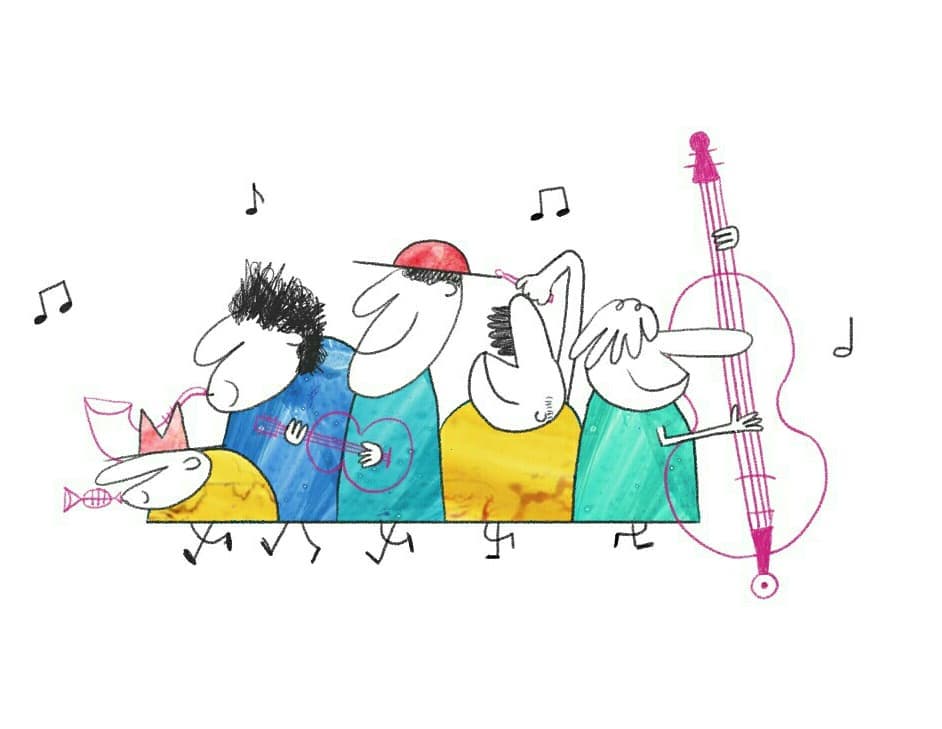
As cold as it may sound to admit, the combination of the words ‘student film’ & ‘anxiety’ is a pairing that fills me with a certain sense of apprehension before a viewing. With that in mind, for me to not only enjoy such a film but want to write about it (twice!), is a real credit to the filmmakers involved. An animated short we recently premiered on Short of the Week, Dan Castro’s RCA grad film Herman Brown is Feeling Down brings life to a well-explored subject by injecting it with humour and styling it like a retro children’s TV programme. Eager to discover the inspiration behind his distinct aesthetic and unravel the personal influence on his story, we spoke to Dan after Herman Brown screened at the London Film Festival.
Herman’s quiet world is suddenly interrupted by something loud and stressful. Combining digital animation with traditional ink-on-film techniques, Herman Brown is a film about life, anxiety, and things not being as bad as they seem.
Despite being a somewhat surreal short, Herman Brown is Feeling Down feels like quite a personal story, can you introduce your narrative to our audience and explain where the premise came from?
Herman Brown is my grad film from the Royal College of Art and is a little story about someone who’s quiet existence is interrupted, for a short while, by something very loud and very chaotic. I was actually working on another film at the time and then, thanks a lot to my granddad having a stroke and some grief I was getting over social media, I had what I can only describe as a bit of a mini-breakdown.
It was such a powerful and overwhelming thing that I couldn’t really think about anything else and found myself winding myself up about being wound up, which is an awful spiral to find yourself in. I decided I wanted to loosely capture that feeling – how something relatively small can suddenly become all-encompassing and totally take over your world for a bit. I wanted it to be more abstract than being about mental health; it’s still ostensibly about stress, but it’s also about bad relationships, migraines, anxiety, all that.
For me, one of the things I find most interesting about your film is how it manages to feel experimental but still retains a sense of relatability. Was this something that crossed your mind when creating the film – pushing boundaries but still making a universal story?
Really, I just wanted to experiment whilst making the film. I knew that 35mm scratch animation was something I wanted to play with and I knew that I could see it being a really strong metaphor for the feelings I was having – chaotic, looping, uncontrollable – but I also knew that I like telling character stories. I find it really really difficult to make purely abstract work and get across what I want so combining the two felt like a good way of doing that.
It’s a fascinating, exhausting way of working.
The whole film was actually made relatively without a plan. I drew up a few storyboards at the very beginning I wasn’t happy with and so just started making things and seeing where it led, joining scenes up and seeing what happens. It’s a fascinating, exhausting way of working. But it was also driven by my choice of animation style – by predominantly doing things in After Effects with digital cut-outs, it meant I could animate something and throw it away very quickly.


Some early development of the Herman Brown character – photos from Dan’s Instagram
Where did the central character of Herman come from and what do you feel he brings to the story?
I suppose I’m Herman Brown! I was actually going to make t-shirts with that on. If you see a guy walking around with one on…come say hi. I think everyone is a little bit Herman, sometimes.
Aesthetically, the film has the feel of a retro children’s TV programme, what were your influences with the visuals and what were you hoping to achieve?
My grandad once sat me down in front of Stoppit and Tidyup, my all time favourite cartoon series and old videos of children’s TV from well before my time. Things like Watch With Mother and The Herbs, Captain Pugwash, a whole variety of things. I think because of that I’ve always had a love for old-feeling things. Somehow I ended up at Ernest Pintoff and Flebus, who is probably my main influence. Sparse, simple design – both visually and in terms of story – that is still so rich.
I really like the idea of paring something back almost to its constituent parts and seeing how honest and rich a story you can tell with very little.


More early development sketches – photos from Dan’s Instagram
Can you tell us a bit about your production process – how long did it take to create, what tools did you use?
Herman Brown is a combination of digital and traditional techniques. The textures and the ‘stress’ are all hand-painted on 35mm film and scanned in at very high resolution. Everything else is drawn in Photoshop and animated in After Effects. I wanted to create a kind of cut-out effect similar to my retro influences but developing a way of doing it in contemporary software. It’s partly because I’m very impatient for an animator – I like immediate results. Because of that, it meant I could animate very quickly and throw shots away, which meant I could work quite instinctively.
I wanted it to be more abstract than being about mental health.
Sound plays a huge role in the success of your short, how did you go about creating that soundtrack and why do you think it’s important to the film?
I worked with Kenny Young, a long-time collaborator of mine and someone who very quickly understands what I’m trying to achieve with the shorts we make together. Very early on in our R&D phase Kenny showed me an experiment he made with the butterfly at the beginning and that actually set the tone for the rest of the world building from an audio perspective. I wanted the world to feel musical.
What are you working on next?
I’m working on a whole bunch of things at the moment; developing my short Big Finds A Trumpet into a children’s TV series for pitching, working on my next short film about an old man in hospital and doing a lot more experimenting with abstract film.


